 ‘There is no danger of a deep state out of control in some way,’ said William Hague, the UK’s Foreign Secretary in June 2013, speaking about the Edward Snowden revelations.
‘There is no danger of a deep state out of control in some way,’ said William Hague, the UK’s Foreign Secretary in June 2013, speaking about the Edward Snowden revelations.
‘Which must be the first time a British minister has used the expression “deep state” in the House of Commons,’ noted Robin Ramsay in Lobster #65. Hague’s reference to the deep state points to the political writing of Peter Dale Scott and his concept of deep politics, first promulgated through Scott’s 1993 book Deep Politics and the Death of JFK.
‘Deep politics’ (and you can see Scott introducing the topic in this video) is defined as ‘all those political practises and arrangements, deliberate or not, which are usually repressed rather than acknowledged’ (p.7).
He goes on, in the preface to the paperback edition, to expand on this definition: ‘A deep political system or process is one which habitually resorts to decision-making and enforcement procedures outside as well as inside those publicly sanctioned by law and society’ (p.xii). Scott explains with an example of what deep political analysis would focus on: ‘From the viewpoint of conventional political science, law enforcement and the underworld are opposed to each other, the former struggling to gain control of the latter. A deep political analysis notes that in practice these efforts at control lead to the use of criminal informants; and this practice, continued over a long period of time, turns informants into double agents with status within the police as well as the mob. The protection of informants and their crimes encourages… systemic corruption’ (p.xii). This process works the same way for a Central or Federal agency as well as for the police, especially when a government at a high level turns to underworld leaders, terrorists or private corporations for some political end. This means that a political system contains within it systemic arrangements with criminals that just kind of grow (often not through design), as well as competing economic interests; irrational forces; the self-developed agendas of double agents, or of triple agents; and chaos.
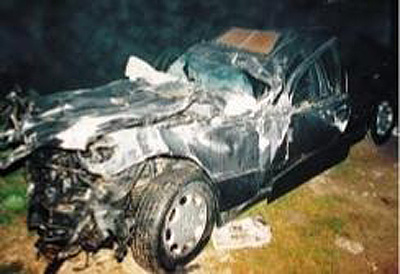
While the term ‘deep politics’ originates with Scott, he explains, 10 minutes and 41 seconds into his Conversations with History interview, that the term ‘deep state’ comes from Turkey. It’s a phrase used there since the 70s but the first major incident associated with it was the Susurluk car crash of 1996, a car wreck (pictured) the passengers of which were, in Scott’s words, ‘a member of parliament, a beauty queen, a quite senior police captain, and the leading drug trafficker in Turkey who was also the head of a criminal paramilitary organization The Grey Wolves’ – Abdullah Çatlı, who was officially wanted by the police. The crash exposed the reality of relationships, which under the conventional political analysis of ‘the public state’ (‘the state we’re taught about in school’) are not supposed to exist, but which in reality do exist, in the deep state.
What this has to do with the JFK assassination arises from the Warren Commission (WC)’s depiction of Jack Ruby as a loner who had no connection to organized crime, based on the information/lies given to it by the FBI. This depiction of Ruby, which has since been conclusively disproven, by researchers and ultimately by the House Select Committee on Assassinations (HSCA), reveals an attempt by state institutions to suppress the reality of criminal systems, for political ends. Scott doesn’t believe that the assassination has been ‘dealt with’ (certainly the HSCA didn’t unravel Oswald the way they did Ruby) and that critics of the official account(s) of the assassination ‘have been too fixated on the least answerable question: Who really killed the President?’ (p.4). Scott believes that the ‘contextual question’ is ‘both more important and paradoxically more easy to answer: What were the structural defects in governance and society that allowed this huge crime to be so badly investigated (or, in other terms, to go unpunished)?’ (p.4). This takes us beyond Dealey Plaza, beyond the individual conspiracy theories, and into a deep political analysis of the assassination, which is the substance of Scott’s book.
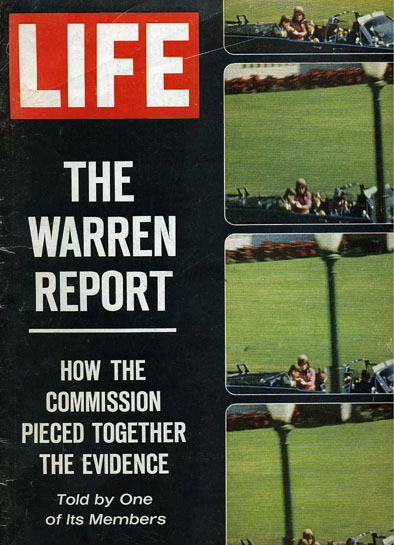
‘The Dialectical Cover-Up’
Scott identifies a ‘two-phase dialectical cover-up, in which (phase one) a false but plausible story of an international Communist conspiracy… was eventually (phase two) replaced by a second false story of Oswald as a lone assassin’ (p.38).
There was a cable dated 9* October ’63 from the CIA station chief in Mexico, Win Scott, to CIA Director John A. McCone (1902-1991). It told of a man who contacted** the Soviet embassy in Mexico City on 1 October, and identified himself as Lee Oswald. This ‘Oswald’ told a Soviet guard that he had spoken with Valeriy Vladimirovich Kostikov on 28 September. Kostikov was believed by both the CIA and the FBI to be a KGB assassination expert. While the WC did mention Kostikov, it did not explain his alleged KGB role. The CIA simply ‘never gave’ the WC ‘all the data it had accumulated in response to the Mexico City cable about “Lee Oswald” and Kostikov’ (p.40). Information about Oswald in Mexico, and an Oswald impersonator in Mexico, has taken years to come out, and it’s a subject that will be covered in the next entry or two of this blog. Basically, it’s highly unlikely the 1 October man in Mexico was actually Lee Harvey Oswald. This obvious attempt, before the assassination, by persons unknown, to link Oswald with an international communist plot, was the ‘phase one’ false story covered up after the assassination with the ‘phase two’ story of the lone assassin. ‘Many who found the second false story much more implausible than the first nevertheless came forward to support it, if preferable… for… the avoidance of an unnecessary and unjust war’ (pp.38-39).
Blather updates:
*The cable is reproduced in John Newman, Oswald and the CIA (2008 edition), p.509, and is actually dated 8 October.
**This was a telephone call to the embassy, not an appearance at the embassy. See Peter Dale Scott, Deep Politics II (third edition, 2003), p.9.
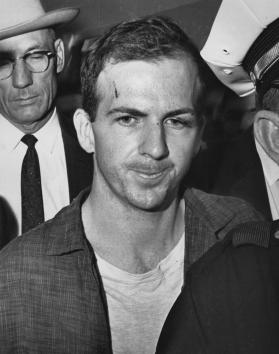
Lee Harvey Oswald
War was a danger. The American Security Council (ASC), funded by defence contractors (General Electric, Lockheed, etc.), was ‘the largest p.r. lobby for the military-industrial complex’ (p.55), and was ‘lobbying for the use of air power in Vietnam’ and ‘the displacement of Fidel Castro’ (p.34). It ran a campaign to promote the idea that ‘a KGB assassin “had been trained at an assassin’s school in the USSR for assignment later on the North American continent”‘ (p.55).
Deputy Attorney General Nicholas Katzenbach (1922-2012) was alarmed that the Dallas police ‘put out statements on the Communist conspiracy theory’ (p.46). He thought the story was false (‘the facts on Oswald seem about too pat–too obvious (Marxist, Cuba, Russian wife, etc.)’ – Benson, Who’s Who in the JFK Assassination, p.229), and on 24 November wanted the FBI to announce that Oswald acted alone. While the FBI wouldn’t act so blatantly, an FBI report stating that Oswald was ‘the lone and unaided assassin’ (p.47) was leaked to the press on 3 December, the day before the WC’s first meeting. Political manoeuverings also ensured that the WC did not hire its own investigators.
The ‘phase two’ cover-up began as early as 28 November, which can be gleaned from the ‘dark and scopeless rifle’ story. On 24 November, Marina Oswald was interviewed by the Secret Service. The transcript reveals serious discrepancies between what she said in Russian, and what the interpreter tells the Secret Service she said. The interpreter was Peter Gregory, a Russian emigré, cut from the same cloth as Ilya Mamantov, who had translated Marina’s statement to the police on 22 November. Gregory and Mamantov were friends. ‘Both men had worked together to set up a CIA-subsidized “church” in Dallas, and Gregory had known Oswald before the assassination’ (p.268).
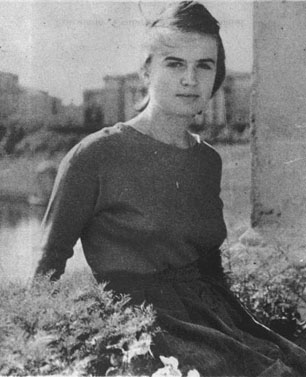
Marina Oswald
The two interpreters were probably in collusion, because the transcript of the Secret Service interview reveals that Gregory added in details about Oswald’s rifle that Marina never said – that the gun was dark and that she didn’t recall seeing the sight – details which were also in the Mamantov-approved police statement. They were attempting to use Marina to identify ‘the rifle as one which Oswald had used in the Soviet Union… Mamantov… himself later went on television to argue that the assassination was an international Communist “underground conspiracy”‘ (p.270). But then on 28 November, interpretations of Marina’s language changed, and she identified the rifle found on the 6th floor of the Book Depository as Oswald’s, not a ‘dark and scopeless rifle’, and went on to tell the WC ‘that Lee sold his Russian gun in Russia’ (p.271).
Blather update: the following paragraph was expanded for clarity.
The FBI was an important tool in the ‘phase two’ cover-up. It suppressed information, as can be seen from the FBI’s JFK files released years later. The need to blot out indications of an international communist conspiracy was used to blot out evidence of any kind of conspiracy. The FBI withheld information about Ruby’s connections with organized crime: it possessed but suppressed information from lawyer Luis Kutner about Ruby’s relationship with mobsters; and it made sure the WC never heard about John Wilson-Hudson, a witness who could testify that Ruby visited the (temporarily) imprisoned senior mob boss Santo Trafficante in Trescornia prison in Cuba in ’59 (the public first became aware of Trafficante as a Mafia leader in ’60 from Robert Kennedy’s book The Enemy Within, but involvement with plots to kill Castro, which he admitted his role in to the HSCA, gave him CIA protection (p.227, also Benson p.455)).
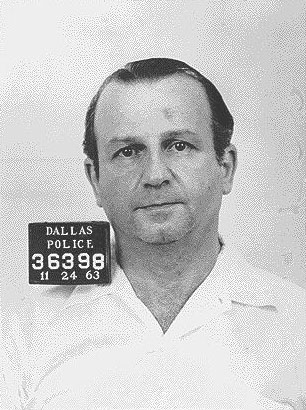
Jack Ruby
There were about 100 more FBI interviews with Ruby associates than were sent on to the WC, the hundred kept out of it being all Ruby’s criminal, political and criminal-political links (pp.59-60, 322). The FBI closed down all leads that made it look like Oswald was not a lone nut. The surveillance tapes from November ’63 of racist extremist Joseph Adams Milteer, discussing the plan to kill Kennedy ‘from an office building with a high-powered rifle’ (and then on the 26th claiming ‘everything ran true to form’) (pp.49-50), were downplayed, and not presented to the WC as credible.
Scott does not get embroiled here in a default ‘whodunnit’ reaction to this information; he sees a ‘defect’ in hypotheses about the killing of JFK, whether the trigger was pulled by the right-wing, communists, the Mafia or the CIA: ‘This is to look for an external conspiracy violating a systemic political order from without’ (p.74). Deep political analysis, on the other hand, can explain the assassination in the same way it can explain Watergate or Iran-Contra. Scott’s ‘perspective of power’ is of ‘a symbiosis of public government, organized crime, and private wealth with deep connections to both government and crime’ (p.74). Analyses of Oswald and Ruby and the ‘intelligence-mob-corporate’ (p.80) connections of their lifetimes* (pp.77-208, extensive and not possible to summarize here) establish this deep perspective of power. Scott argues that ‘the forces behind the assassination… [are] deeply systemic; and the violation to the… power system can be seen as coming from the Kennedys, with their policies of detente abroad and an attack on a CIA-sanctioned Hoffa-crime connection at home… The assassination was… [an] adjustment, of a system’ (p.74). Therefore, ‘psychological resistance’ to discussing the Kennedy assassination is ‘intense’ (p.12) and the case is permanently marginalized, floating on the esoteric waveband to be picked up as outré information by low-lying Blathermancers. ‘The notion that unreason as well as reason rules us from above is psychologically painful,’ says Scott (p.12).
* Blather comment for emphasis: this point is relevant whether Oswald’s role was assassin or patsy. Such ‘deep’ connections and activities throughout Oswald’s short life indicate to Scott that ‘the deep political system’ killed JFK (p.295). The identity of the trigger-puller of the head shot is unimportant.
- Who Shot JFK?
- The Kennedy Conspiracy
- Reasonable Doubt (part one)
- Reasonable Doubt (part two)
- Who’s Who in the JFK Assassination
- Deep Politics and the Death of JFK
- Deep Politics II: Oswald, Mexico, and Cuba (part one)
- Deep Politics II: Oswald, Mexico, and Cuba (part two)
- Oswald and the CIA (part one)
- Oswald and the CIA (part two)
- Marina and Ruth
- Oswald and the CIA (part three)
- Wilderness of Mirrors
- Perils of Dominance
- JFK and the Unspeakable
- Z-∞
